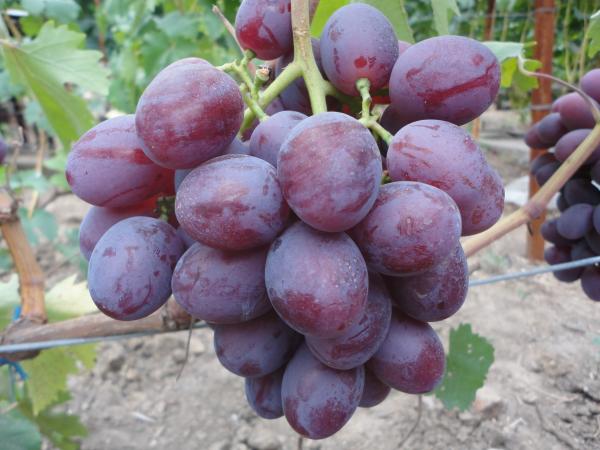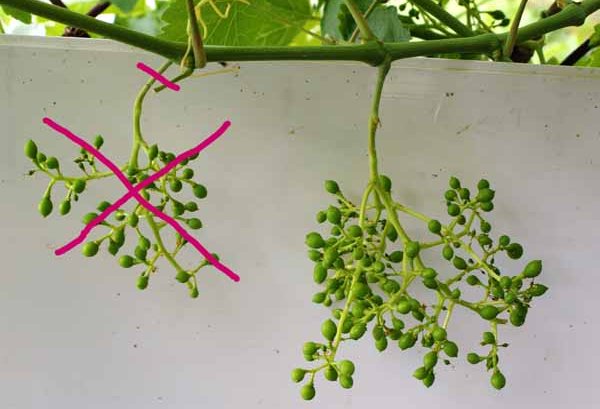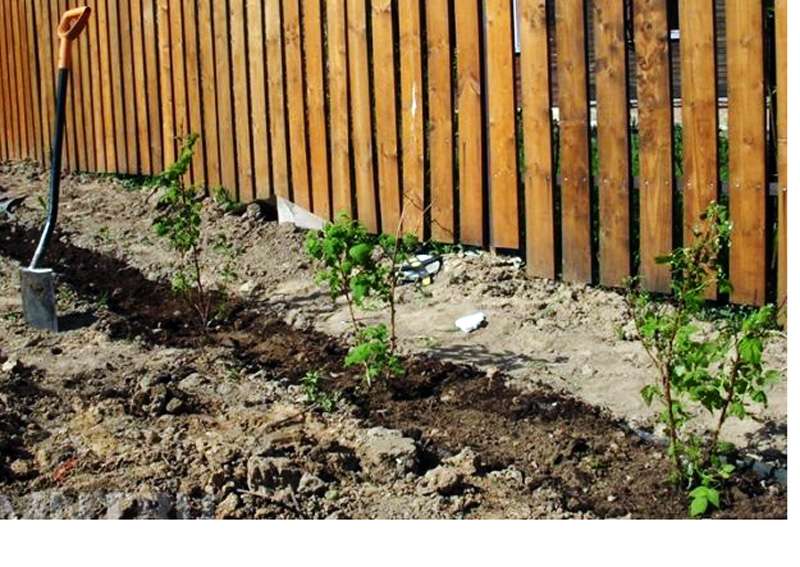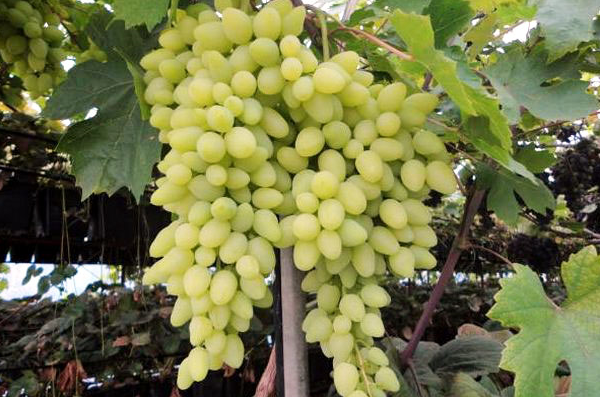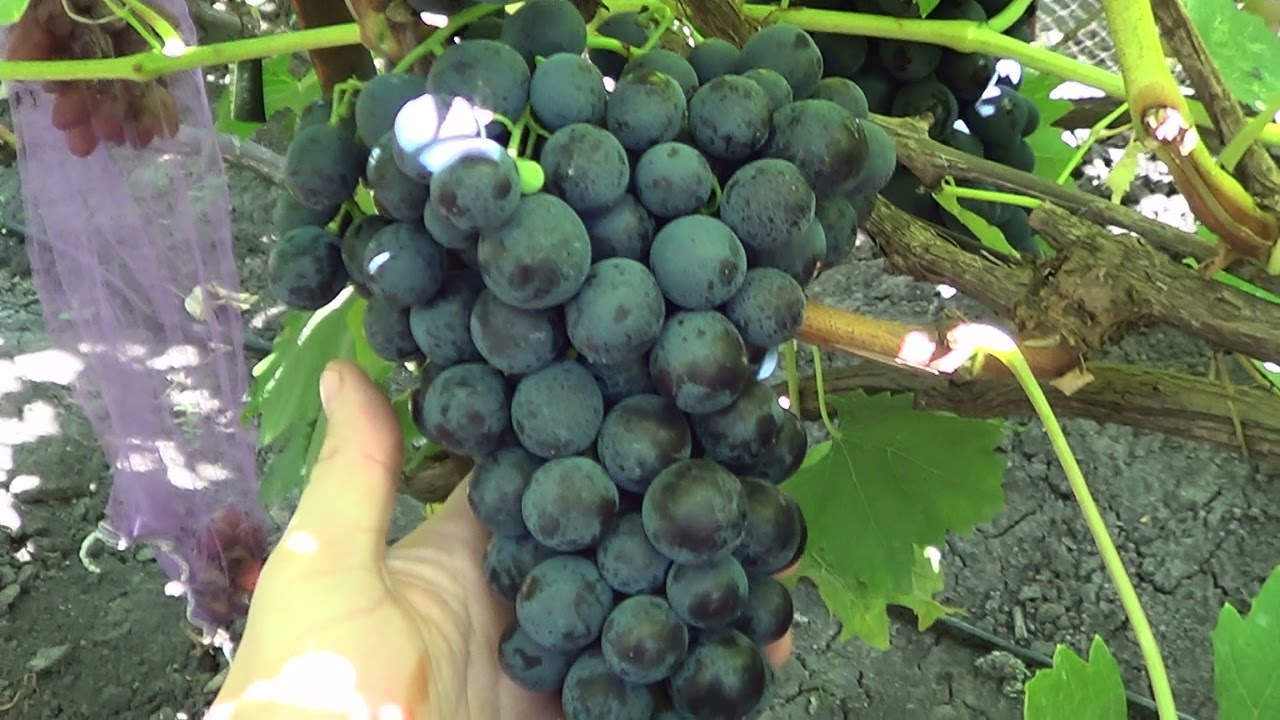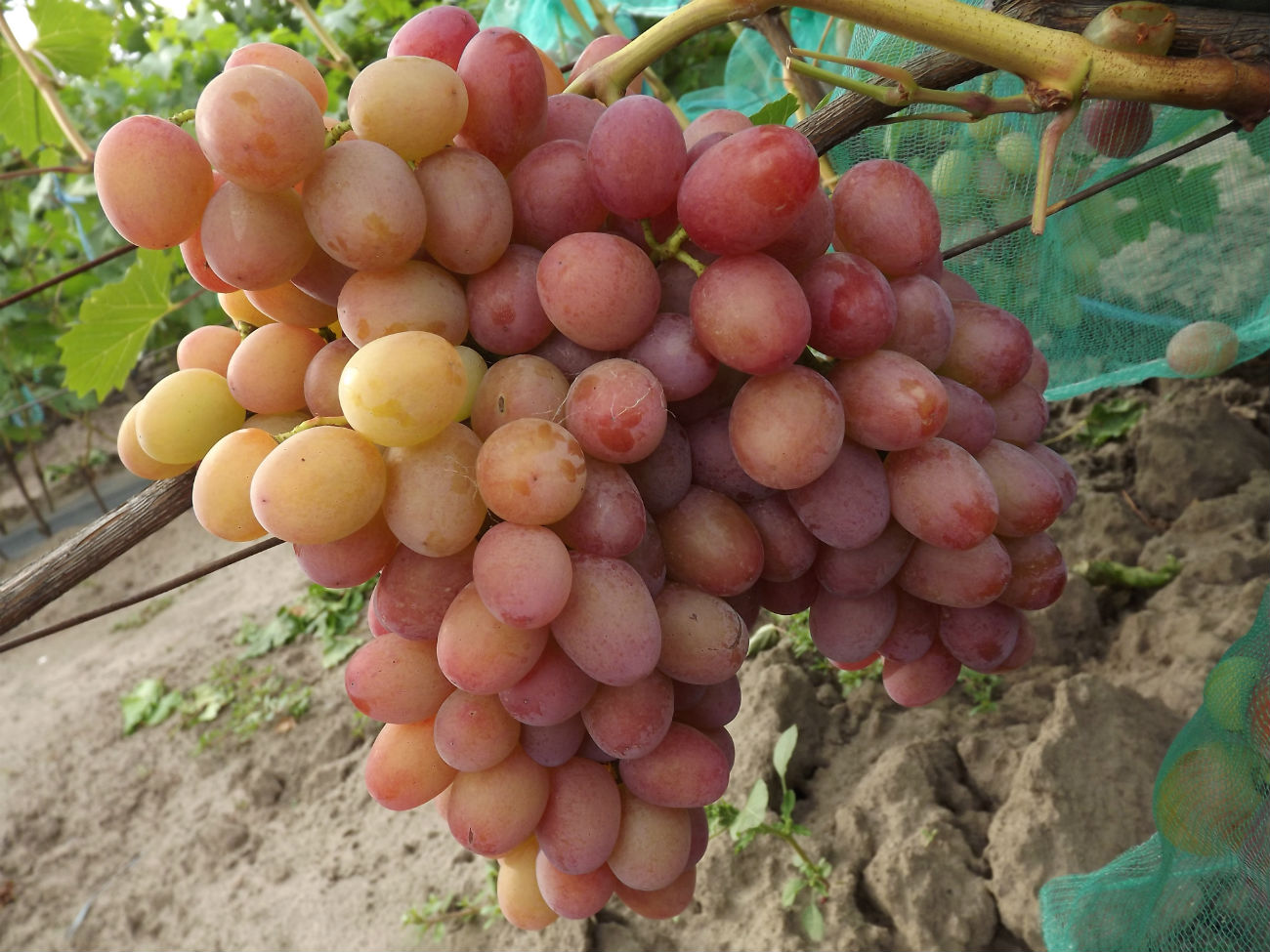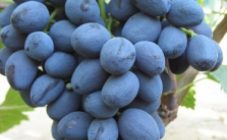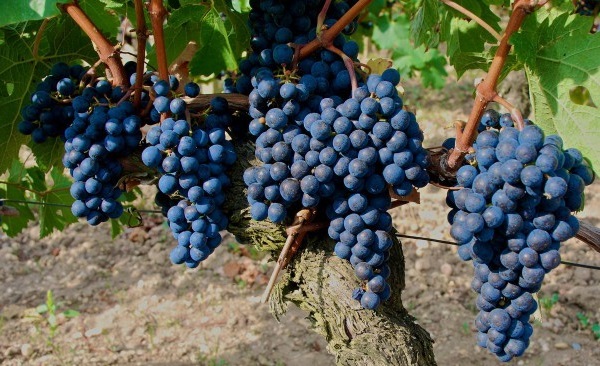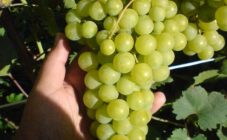Content:
A few decades ago, grapes were considered a heat-loving crop, which can only be grown in the southern regions of Russia. However, thanks to the efforts of breeders, new varieties of this crop have appeared, which grow well in the Moscow region and many other regions with a similar climate.
One of these hybrid varieties is the Lowland grape, which was specially bred for the central strip of our country. Its main characteristics, positive qualities and cultivation techniques will be discussed in this article.
The history of the creation of the variety
The Nizin hybrid was obtained by a self-taught breeder N.V. Krainov. To obtain a new species, this winegrower crossed the varietal grapes Kesha 1 (its other name is Talisman) and radiant Kishmish.
However, the crossing of these parental forms was carried out by another well-known breeder "from the people" VV Zagorulko. But, since their work was carried out independently of each other, their varieties turned out to be different, with their own characteristics and properties. Zagorulko V.V. got the Lily of the Valley grape variety with slightly different properties and characteristics.
In this article, the story will focus on the grape table hybrid Nizin, which was created and acclimatized for the middle zone of our country, the Moscow region, but grows well and bears fruit in the south of Russia.
Characteristics and features of the variety
Description of Lowland grapes should start with bunches. Their shape is cylindrical, medium density. The average weight of the brush is up to 750 g, however, record-breaking heavy clusters weighing 1.6 kg and more (up to 2.9 kg) were also removed from these vines. Here you need to understand that a similar result can be achieved only when all agrotechnical measures are taken to care for these grape bushes.
Taste qualities of ripe berries are pleasant, with a slight sourness and cherry flavor. The harvested crop can be stored in the refrigerator. In such conditions, it lays for at least 3.5-4 months, without losing its pleasant taste and presentation. Juicy and tasty bunches remain so even in December, often falling on the New Year's table.
The shape of ripe fruits is oval, slightly tapering downwards, the size is large, about the size of a coin of 5 kopecks. The radius of each berry is about 12-16 mm, and the weight is up to 14.5 g. The color of ripe berries is purple with a red or pink tint. And when ripe bunches are illuminated by the sun, it seems that the fruits are glowing from within. The purple color appears on the fruits about 12-14 days before the onset of full maturity - this is one of the differences between the Nizin varietal grapes from other varieties.
The pulp of the fruit is juicy and fleshy. The average amount of sugars in ripe berries is about 18%, the amount of acid is about 9 g / l.
Each fruit has at least 3 seeds inside and a dense skin, which is slightly crunchy when eaten and is almost not felt.
The harvest usually ripens in a little over 4 months after the appearance of the first leaves on the shoots. But these terms may vary depending on weather conditions. Usually ripe bunches of these grapes are harvested in the first or second decades of September.
Young vines begin to bear fruit 3-4 seasons after planting. In the first couple of seasons, the yield of the bushes is small, but up to 6-8 kg of delicious sweet grapes can still be harvested from an adult bush.With age and with good care (as well as timely application of top dressing), the yield increases sharply.
Flowers of both female and male types appear on the shoots, therefore this vineyard is self-pollinated and does not require the presence of a number of other pollinating varieties. Flowering occurs from the first decade of July. Peas in the brushes is not observed, however, it is required to carry out the formation of bunches, removing excess ovaries, so as not to overload the shoots.
The average indicators of the grape bushes of the Lowland for the ripening of shoots and good yield are one of the main advantages of this variety. Saplings are accepted well, they are actively growing. With proper planting and good care, young vines begin to bear fruit after a couple of seasons. Up to 25 young shoots can appear on each vine per season. Moreover, young shoots ripen by about 1/3. On each fruitful shoot, up to 2 clusters ripen per season, each of which contains about 29-32 berries. Good harvests of this grape are repeated every year, even in spite of bad weather conditions.
The main characteristics of these grape bushes include:
- this mid-season variety can be grown in the Moscow region, as the brushes will have time to ripen;
- the rapid formation and maturation of fruiting stems allows the vines to give a good harvest annually;
- all flowers are 100% pollinated, no peas are observed;
- pleasant taste and the smell of ripe fruits make it possible to classify Nizin grapes as table varieties;
- ripe bunches have an excellent presentation, tolerate transportation well, are not prone to cracking;
- vines have an average resistance to frost - they can withstand temperatures down to -22 ° C;
- the grape lashes of the Lowlands are highly resistant to mildew, oidium and gray rot;
- in the process of ripening, the fruit is not attacked by wasps, despite its sweet aroma and pleasant taste.
Agricultural technology of cultivation
Having decided to start growing grapes, you must first prepare the area where the grape seedlings will grow.
Such a place should be well lit by the sun's rays, since the vines grow poorly in the shade, and the ripening clusters do not collect enough sugars, and also do not grow to the specified size. As a result, the yields obtained will be much lower than expected, and the growth rate of the shoots will be significantly reduced.
If there are more than two planted seedlings of the Lowlands, the planting pits should be located at a distance of at least 3.5 m from each other. This is necessary so that the aboveground part and the root system of plants develop well, and they have enough nutrients. It is necessary that the groundwater does not come too close to the surface of the earth - its depth must be at least 1.5 meters. Otherwise, the root system of the grapes will rot.
A sufficient amount of fertilizers, both organic and mineral, should be applied to the soil before planting. In each pit, 10 kg of humus or compost, 40 g of phosphorus fertilizer and 30 g of potassium salt, as well as a glass of wood ash must be put.
If the seedlings are purchased in a nursery and have a closed root system, then such plants take root in a new place quickly and after a week and a half begin to actively grow.
For seedlings with an open root system, the roots must be carefully examined - they must be strong, not dry, not damaged or broken. Before planting in a permanent place, such plants are placed for 12 hours in water, and then for a while in Kornevin's solution to activate the growth of roots.
After planting, water is poured under each bush - at least a bucket for each plant. If the soil has settled, it is advisable to add earth.Then you can add a layer of mulch with a thickness of at least 5-6 cm.
Further care for this grape variety is the same as for other varieties: regular watering (but not excessive), loosening of tree trunks with removal of weeds and application of dressings. It is also necessary to form vines during the growth of bushes and normalize yields in order to avoid overloading the bushes.
Advantages and disadvantages of the variety
Before planting seedlings of a new variety, winegrowers must read the literature that describes its main characteristics, and be sure to pay attention to the pros and cons of the culture.
The main positive qualities of Nizin grape bushes include:
- due to the relatively early ripening period, the Lowland can be grown in the conditions of the Moscow Region and regions with a similar climate;
- high resistance to diseases usually affecting vineyards;
- good presentation and excellent taste;
- 100% pollination of the ovaries due to the formation of bisexual flowers;
- the harvested crop transfers transportation over fairly long distances without losing its presentation and taste;
- medium resistance to frost;
- maturing brushes are not damaged by flying insects;
- shelf life in the refrigerator - at least 4 months.
The variety has practically no disadvantages, there are some nuances regarding its planting and care:
- bushes require a large area for food, so they should be planted at a considerable distance from each other;
- rationing of the future harvest is required so as not to overload the bushes and get large berries;
- with too long a period of heat, the resistance of vines to powdery mildew decreases sharply;
- the presence of seeds in the fruit.
Viticulture has long been considered a priority only in the southern regions of our country. But thanks to the efforts of breeders, varieties have appeared that are suitable for cultivation in other regions. And Lowland grapes are one of those varieties. Having planted it on their site, gardeners will not regret their choice.
